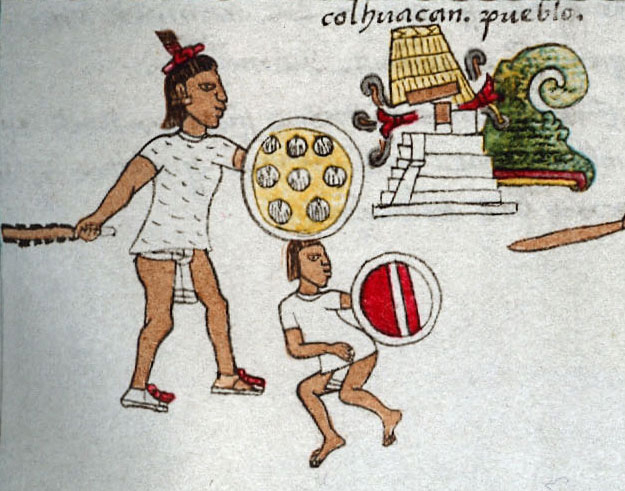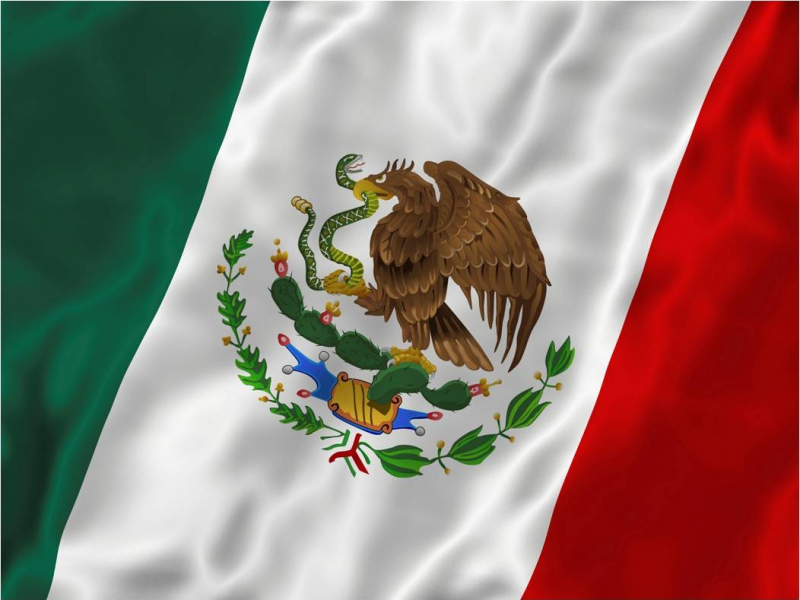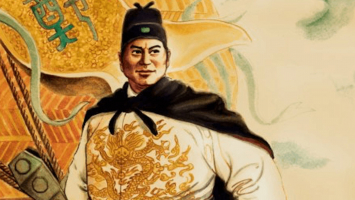Top 10 Interesting Facts About The Aztecs And Their Empire
The Aztec Empire is one of the most well-known Mesoamerican civilizations that existed before Europeans arrived in the early 16th century. The empire was ... read more...formed following a 'Triple Alliance' of city-states in Mexico's valley include Tenochtitlan, Texcoco, and Tlacopan and ruled the region for nearly 100 years. While many features of Mexican culture are Hispanic, the country also has significant ties to the Aztec civilization and other Mesoamerican traditions, giving it a true mix of New and Old World cultures. Today let's follow Toplist to discover some interesting facts about the Aztecs and their empire.
-
The Aztecs were a Pre-Columbian Mesoamerican people of central Mexico in the 14th, 15th, and 16th centuries. They called themselves Mēxihcah. Aztlan is a mythological location whose location has yet to be discovered. Aztlan is referred to by the Aztecs as their original homeland. The word Aztecah means "people from Aztlan" in Nahuatl, the Aztecs' native language, and this is where the Aztecs obtained their popular moniker.
Around 1250 AD, the Mexica people were the last Aztlan migrants to settle in the Valley of Mexico. They were allowed to settle at Chapultepec by the king of the city-state Colhuacan. Later, he intended to marry one of his daughters to a Mexica woman and establish her as the leader of their tribe. Instead, the Mexica flayed her skin and sacrificed her to their patron god Huitzilopochtli. The Mexica believed that by doing so, the princess would become a divinity and join the gods. Enraged, the king expelled them from his domain. They were banished to an Island after they sacrificed the daughter of a king. They were stranded on an island in Lake Texcoco, a swampy place with a tough terrain that no one had previously explored. The Mexica people, also known as the Aztecs, observed an eagle nestled on a nopal cactus there and took it as a sign from their God to build their city there. Tenochtitlan was the name given to the city.

Photo: historyextra 
Photo: mexicolore -
Tenochtitlan was a little swampy island in Lake Texcoco in the Valley of Mexico when the Aztecs established it. They had to overcome numerous obstacles, including laying a solid foundation for their buildings in the swampy ground, supplying clean water to the city, linking the city to the mainland, safeguarding it from floods, and generating enough food for the city's growing population. Despite these obstacles, the Aztecs built one of the greatest cities of the time on that site.
Tenochtitlan was the largest city in the Pre-Columbian Americas at one time. It had an estimated population of 200,000 to 300,000 people and had an estimated size of 8 to 13.5 km2. It was one of the world's largest cities, with twice the population of London or Rome. When the Spanish arrived in Tenochtitlan, they were so taken aback by the city's streets, causeways, canals, aqueducts, marketplaces, palaces, and temples that they wondered if they were dreaming. With many archives, certainly it is one of the interesting facts about the Aztecs and their empire.
So, they built the Mervelous City Tenochtilan on one of the most difficult terrains. According to the legend, The Aztec god Huitzilopochtli is claimed to have told the Aztecs to look for their city where they saw an eagle perched on a cactus with a serpent in its talons (which is on the current Mexican flag). On the little island where Tenochtitlan was constructed, the Aztecs supposedly had this vision.

Photo: mexicanroutes 
Photo: pinterest -
The indigenous Aztecs of central Mexico founded the Aztec religion. Human sacrifice is practiced in connection with several religious festivals in the Aztec calendar, as it is in other Mesoamerican religions. The Aztecs would frequently combine deities borrowed from various geographic locations and peoples into their own religious rites, as their polytheistic religion contains lots of gods and goddesses.
The globe is divided into thirteen heavens and nine earthy strata, or netherworld, according to Aztec cosmology. The first heaven and the first terrestrial layer overlap at the Earth's surface, bringing heaven and terrestrial layers together. Each level is associated with a different collection of gods and celestial bodies. The Sun, Moon, and Venus are the most prominent celestial entities in Aztec religion (both as "morning star" and "evening star"). "People of the Sun" was a common nickname for the Aztecs.
Many of the Aztecs' most important deities are still revered in the modern world. These deities are known by several names, including Tlaloc, Quetzalcoatl, and Tezcatlipoca, and have been revered by various societies throughout Mesoamerica's history. Tlaloc, the rain deity; Huitzilopochtli, patron of the Mexica tribe; Quetzalcoatl, the feathered serpent and god of wind and learning; and Tezcatlipoca, the sly, elusive god of fate and fortune, are all important deities to the Aztecs. Tezcatlipoca was also associated with sorcery and war.
Photo: historycrunch 
Photo: nativeamericannetroots -
The Aztecs were the first to celebrate ‘Day of the Dead’, also known as Día de los Muertos. A millennium before the Day of the Dead celebrations, the Aztecs used skulls to honor the dead. Skulls, like those originally found on Aztec temples, have been a key emblem in the annual festival to remember and converse with those who have passed away for more than six centuries.
The Catholic Church relocated indigenous festivals and ceremonies honoring the deceased throughout the year to the Catholic dates marking All Saints' Day and All Souls' Day on November 1 and 2, respectively, after the Spanish invaded the Aztec empire in the 16th century. On November 2, the Latin American indigenous traditions and symbolism for honoring the dead merged with non-official Catholic activities and conceptions of an afterlife to become Día de los Muertos. On November 1, the same thing happened to honor children who had died.
People erect altars in their houses with ofrendas, offerings to the souls of their loved ones, for these rites. Photos of the deceased and objects left behind are illuminated by candles. Families read letters and poetry about the deceased, as well as anecdotes and jokes about them. Tamale, chile, water, tequila, and pan de muerto, special bread for the event, are lined up alongside brilliant orange or yellow cempaschil flowers and marigolds, whose powerful aroma aids in the souls' return.

Photo: latinousa 
Photo: red.msudenver.edu -
The 'huey tlatoani,' or 'Great Speaker' was the ruler of the Aztec capital Tenochtitlan and over all the other altepetls in the Aztec Empire. The huey tlatoani was an important figure in Aztec history and the Aztec Empire's expansion. They were in charge of the entire Aztec Empire. For example, the huey tlatoani controlled the Aztec Empire's tribute system, military operations, and any wars fought, as well as the empire's expansion into new territories. Because the huey tlatoani was preoccupied with the concerns of the empire as a whole, the cihuacoatl in Tenochtitlan was in charge of the city's administration. Today, historians refer to the huey tlatoani as Emperors, since they oversaw all aspects of the far-reaching Aztec Empire.
While Huey Tlatoani was the supreme authority and exterior leader, there was also an inside ruler known as Cihuacoatl ("female twin"), whose major responsibility was to oversee Tenochtitlan. The Huey Tlatoani and the Cihuacoatl were always close relatives. These were not priestly ranks, although they did undertake essential ritual duties. The Aztec Empire also maintained a four-man military and advisory council that aided the emperor in making decisions. The Council's four members also served as military generals. The emperor could only be chosen from this Council at the time of succession. This was done to keep the nobility's ambitions in check.

Photo: historycrunch 
Photo: wikipedia -
When people began to have high fevers, headaches, and bleeding from the eyes, mouth, and nose in 1545, calamity struck Mexico's Aztec nation. In most cases, death occurred within three or four days. Within five years, an epidemic known as "cocoliztli" took off up to 15 million individuals, accounting for around 80% of the population. The Aztec Nahuatl language has a word for plague. Its cause, on the other hand, has been debated for about 500 years.
People now refer to it as Smallpox. When the Spaniards attacked the Aztecs' houses, they carried smallpox with them. Because the Aztecs had never had smallpox before, it was highly contagious, and many died. Smallpox is caused by an inhaled virus that produces fever, vomiting, and a rash, followed by fluid-filled blisters covering the body. These develop into scabs, leaving scars. In about one-third of instances, the condition is fatal, and another third of individuals who contract it develop blindness.
Because they had never been exposed to the virus and consequently lacked natural immunity, the native peoples of the Americas, notably the Aztecs, were extremely vulnerable to smallpox.
The Aztecs were affected by smallpox in a variety of ways. To begin with, it killed numerous of its victims, particularly newborns and little children. Many more adults were rendered helpless by the epidemic, either because they were sick, or because they were caring for ailing relatives and neighbors, or because they just lost the desire to resist the Spaniards as disease ravaged those around them. Finally, individuals were unable to tend to their crops, resulting in widespread starvation and severely weakened immune systems among those who survived the disease.
Photo: zocalopublicsquare 
Photo: pbs.org -
The Aztec civilization was an agricultural society that lasted from the 14th century to the fall of the Aztec Empire in 1519. The majority of Aztecs spent their days laboring in their fields or cultivating food for Tenochtitlan, their enormous capital city. Because growing crops was easier than hunting, the Aztec diet was mostly plant-based and concentrated on a few key staples. Corn, beans, salt, and chili peppers were staples of Aztec food, ensuring that the ordinary Aztec had a well-balanced diet free of vitamin and mineral deficits. This is one of the interesting facts about the Aztecs and their empire because most people think that the ancients mainly ate meat.
Corn was the most important Aztec staple, and it was regarded in such high regard that it was included prominently in Aztec mythology. The Aztecs characterized it as "valuable, our flesh, our bones" to some of the earliest Europeans. Maize was consumed as corn tortillas, tamales, corn gruel, and came in a variety of colors, textures, sizes, and quality.
Beans, another essential staple of Aztec cuisine, were a good source of protein. They were available at all times of the day. The beans were soaked in water for several hours before being cooked till tender. They were frequently combined with other vegetables in soups and stews.The majority of Aztecs ate twice a day, the first after a few hours of morning work and the second about 3 p.m., at the warmest hour of the day. Corn oatmeal with chilies or honey for breakfast, or tortillas with beans and sauce. The main meal would include tamales, beans, tortillas, and a squash and tomato casserole in the afternoon.

Photo: historyhit 
Photo: mexicolore -
Moctezuma II reigned from 1502 or 1503 to 1520 as the ninth Tlatoani of Tenochtitlan and the sixth Huey Tlatoani or Emperor of the Aztec Empire (also known as Mexica Empire). He was also king consort of Ecatepec through his marriage to queen Tlapalizquixochtzin of Ecatepec, one of his two wives, though few people in Mexico, even in his own court, were aware of this political function.
In early 1519, Hernán Cortés, a Spanish conquistador, arrived in Yucatán, Mexico. He was in charge of a contingent of 11 ships carrying 630 troops. To conquer the territory, he utilized the approach of pitting native people against each other. He arrived in Tenochtitlan on November 8, 1519, after defeating the Tlaxacan and Cholula warriors by allying with other indigenous. Moctezuma II, the Aztec monarch of Tenochtitlan, welcomed Cortes and permitted him to stay in his capital.
Cortes utilized an incident in which two Spaniards were slain as a pretext to kidnap Moctezuma after about six weeks. For several months, Cortes administered the city in an indirect manner. The Spaniards led by Pedro de Alvarado attacked defenseless Aztec nobility gathered at the Festival of Toxcatl on May 20, 1520, slaughtering hundreds, including much of Tenochtitlan's authority. This sparked an uprising in Tenochtitlan, which resulted in the death of Moctezuma II and the expulsion of Cortes and his troops.
Photo: thoughtco 
Photo: kienthuc -
The Spanish overcame the Chontal Maya of Potonchán in April 1519, and were rewarded with 20 slave women, one of them was dubbed La Malinche. Mayan and Nahuatl were her native languages. She quickly picked up Spanish and became a translator for Cortes. She later became Cortes' mistress and gave birth to his first child, Martin.
La Malinche was an important figure in the conquest of the Aztec empire by the Spanish. She had a crucial role in diplomacy, assisting the Spanish ally with the native tribes, in addition to working as Cortes' counselor and interpreter. She forewarned Cortes about a native scheme to kill his little force, which resulted in the destruction of the scheming tribe. According to one story, Cortes himself stated that Malinche was the main cause for his success after God. So they said that
Cortes was aided in defeating the Aztecs by a native woman named La Malinche
The term "malinchist" was coined in her honor to describe someone who is drawn to other cultures while ignoring their own. Some see La Malinche as a lady stuck between two cultures and the mother of a new species, while others regard her as a traitor who brought her civilization to an end.

Photo: cdapress 
Photo: culturesconnection -
Mexico's national flag is a green, white, and red vertical tricolor with the national coat of arms charged in the center of the white stripe. These three colors were selected by Mexico following independence from Spain during the country's War of Independence and subsequent First Mexican Empire, even if their meanings have altered through time. A point quite interesting is there is a reference to the Aztecs on the Mexican flag. With the people who not have a wide knowledge about history, this is one of the interesting facts about the Aztecs and their empire
Mexico's national army is represented by the colors red, white, and green. The Mexican coat of arms is the major emblem, which is based on the Aztec sign for Tenochtitlan (now Mexico City), the Aztec Empire's capital. It is said that an eagle perched on a prickly pear cactus devoured a rattlesnake. The artwork depicts the founding of Tenochtitlan, the Aztec capital city. The roaming Aztecs would know where to build their new city if they saw an eagle perched on a cactus, according to mythology. They did see the image, but it was on a little island in the midst of Lake Texcoco, which seemed improbable. The Aztecs constructed their city by connecting a series of miniature garden islands with causeways.The serpent was later added to the account by the Spanish, based on a mistranslation of Aztec literature. Snakes were adored by the Aztecs as symbols of wisdom and creation, but the image was reinterpreted by the early missionaries. To Europeans, it would come to symbolize the struggle between good and evil in Mexico, as well as the success of Christian evangelization.

Photo: travelpulse 
Photo: vnexpress































